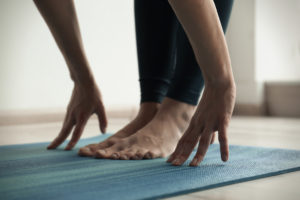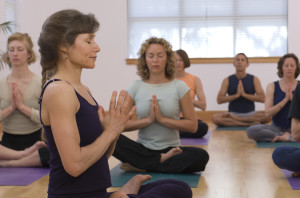Yoga Poses for the New Year
With the roaring 2020s just around the corner, it’s time to think about facing the new year with less stress. Most likely, some of your new year’s resolutions include taking better care of your body and maintaining your well-being. A lot of people manage stress, anxiety, and day-to-day challenges through exercise, and yoga is one form of exercise that gains more and more popularity—especially since it can be done either in a studio or at home, with company or individually.
Yoga can help with a variety of health issues, and different yoga poses are known to help heal different pains, whether those are physical or emotional.
Stress Relief
Like many forms of exercise, yoga can help ease day-to-day stress and contribute to a more relaxed state of being. It helps us bring our attention back to our bodies and focuses the mind and breath on what parts of it are experiencing tension and pain.
- Forward fold/bend: A forward fold essentially looks like bending over to touch your toes. This pose helps the body release tension so that you are better prepared to relax. It also allows the upper back to stretch and release tightness in the neck and shoulders.
- Standing forward fold with shoulder opener: This pose looks the same as a forward fold, but also incorporates your arms stretched behind you in an upward pull. In addition to increasing exhalation, shoulder openers help the body concentrate on the pose and reduce stressful thoughts. This pose helps release shoulder tension and relax the hamstrings.
- Side stretch: A relatively easy pose, a side stretch can be done on both sides of the body, helping to release the neck, head, and shoulders muscle tension.
Balancing Emotions
Just as it helps relieve stress, yoga can help us process our emotions and let go of emotional tensions we have been holding in our bodies.
- Tree pose: With a firm stance on the ground, this pose is accomplished by lifting and placing your foot either on your inner thigh or calf (being careful to avoid the knee area). Intended to stretch your upper body, while you raise your hands above your head and breathe into your heart space. The purpose is to ground yourself and embody the stability that comes with situating your roots into the earth.
- Warrior II: With the tree pose having brought attention to your heart space, the warrior II helps you realize the extent of your inner power that comes from your heart space. Drawing 20 to 25 breaths in this pose, you can focus on drawing strength and confidence into yourself.
Dealing with Pain
A combination of gentle yoga poses with conscious breathing techniques can help augment relaxation response, especially if used in restorative yoga which is meant to help heal deeper pain and allow the body to experience a pose for a longer period of time.
- Nesting pose: To find this pose, lay on your side, legs bent and drawn in toward your belly. This pose is recommended if you have trouble sleeping or are suffering from insomnia, as it creates a sense of security and nurturing. Focus on the natural rhythm of your breath, observing how the breaths move in and out of your body, creating a secure pattern.
- Supported backbend pose: This heart-opening pose is done by laying on your back with your legs bent. The key is to put a bolster under your upper back to releases chronic tension in the back and shoulders, working to undo the stress placed on our bodies from working at a desk, a computer, or driving. It improves the flow of the breath from the upper chest to the heart and rib cage, down to the belly.
- Seated forward fold: Done in a seating position, it’s best to use a bolster to let your upper body meltdown as you reach for your feet. According to the information given by QC Kinetix (Bradenton), our daily activities place a lot of stress and pain on the spine, not only on the shoulders and neck. This pose helps relax the hips and the back allowing it, as well as your chest and belly, to expand and contract with each breath you take.
While this list is far from exhaustive, it’s meant to provide a basic understanding of the benefits of yoga. The best way to get involved is to seek out a local class or begin practices the fundamentals of yoga (basic poses, like the ones above) through videos online.
More

